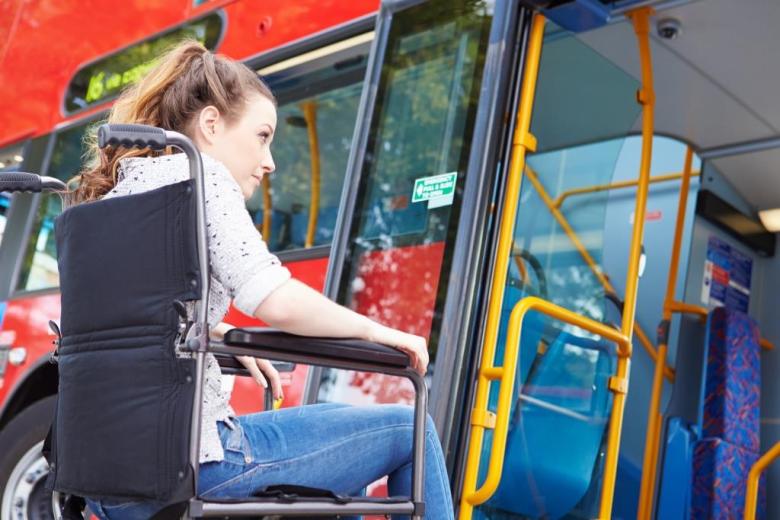
As councils across Australia seek to make their communities more accessible for residents living with disability, advocates point to the importance of stakeholder engagement.
Activities for children with autism and charging ports for electric wheelchairs are just some of the elements of disability inclusion programs being developed and implemented by local governments in Australia.
In Victoria, Golden Plains Council has been running a weekly lego club to foster social and creative skills in children with autism.
Mayor Helena Kirby said the initiative stemmed from council’s disability inclusion plan which sought to respond to the large proportion of children aged 10 to 19 with a disability in the area.
“Children with autism often do not feel comfortable in mainstream activities and recreational programs and as such are at risk of social isolation, so activities such as Let’s Go, Lego provide a great opportunity for autistic children,” she said.
Brisbane City Council is another council working on disability inclusion, having spent more than $150 million on its plan that includes programs such as a braille trail, all-abilities playgrounds and a wheelchair accessible bus fleet.
Similarly, Victoria’s Maroondah Council is offering charging ports to help people with electric scooters and wheelchairs get outside and rest assured their wheelchair battery won’t run out.
Consultation key, say advocates
Samantha French, senior policy officer at People With Disability, says it’s vital that those with a disability, not just advisory groups, are “involved from the very beginning” in disability inclusion and access plans.
She suggests that councils go beyond mere “compliance” and look holistically at ways to promise access and inclusion.
“What is really needed is for council to bring people in from the community and ask what it is that they need,” she said.
“Local governments have the potential to make the most impact on people with disability.”
Ms French said that some of the most successful inclusion and access plans she has seen have come from councils who hired members of the community with disability.
David O’Loughlin, president of the Australian Local Government Association, agrees that consultation with residents who have a lived experience of disability, as well as other stakeholders, is the blueprint to a successful access and inclusion plan.

He says it’s crucial that councils identify the needs of individual communities by consulting through advisory groups at all levels of planning.
“People need to stretch their thinking and listen to the needs of the community. Councils will find there’s an incredible diversity of actions they can take that will make people’s lives easier,” Cr O’Loughlin tells Government News.
Consulting with service clubs, community groups and community development officers are all useful ways of engaging with those living with a disability in the community, he said.
The ALGA’s 2016 Disability Inclusion Planning Guide for Local Government lists “active citizenship,” or the promotion of participation by those with a disability in council decision making, as a key principle of an inclusive council.
Late last year the Institute for Public Policy and Governance released a guide on how local governments can increase the social and economic participation of people with a disability, noting the importance of engaging with members of the community with disability.
Clr O’Loughlin said that prioritising different elements of disability inclusion programs based on community demand is critical, saying programs should be “a direct response to the demand profile” in an area.
‘Woven into everything’
Ms French also pointed to the need for disability access and inclusion policies to be integrated into all levels of councils’ decision making, including the procurement process.
“There’s no trigger to make sure decisions are mindful of the importance of accessibility. It needs to be woven into everything we’re doing, including our procurement practices and the decisions around who we contract,” she said.
All council staff should be held accountable to meet the objectives of disability inclusion and access plans, Ms French said.
“When senior management have a performance review, there needs to be accountability for what their section has done to improve accessibility,” she said. “Accountability needs to be built within the council itself.”
The ALGA’s Disability Inclusion Guide also notes “allocating responsibility” to support a “whole-of-council” approach as key to disability inclusion.
Case study: Barossa seeks input
The Barossa Valley is one such council that has sought to integrate disability action and inclusion into all areas of council decision making.
Under its Disability Access and Inclusion Plan, which opened for public consultation in April, the council has vowed to ensure that all elements of council planning and decision making are guided by principles of access and inclusion.
The action plan, which has been overseen by an advisory group, takes a “whole-of-council” approach, pledging to make mainstream public facilities and services universally accessible to residents and visitors with disability.
Comment below to have your say on this story.
If you have a news story or tip-off, get in touch at editorial@governmentnews.com.au.
Sign up to the Government News newsletter.
